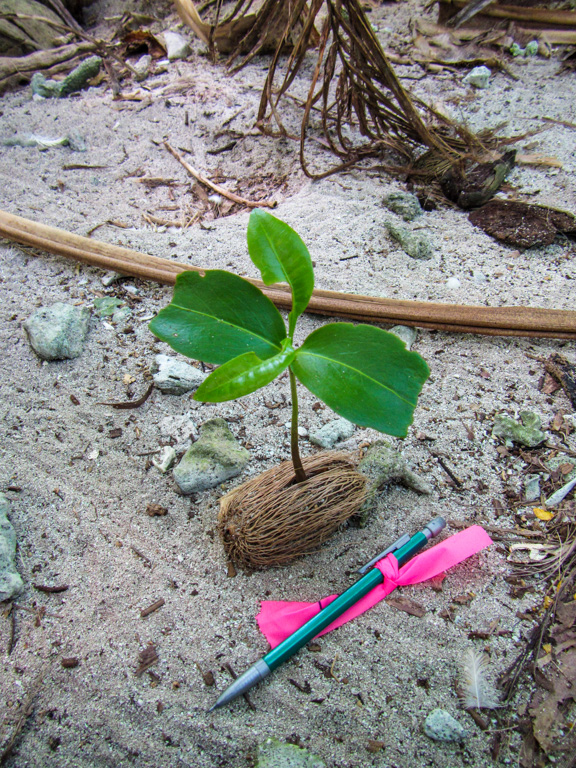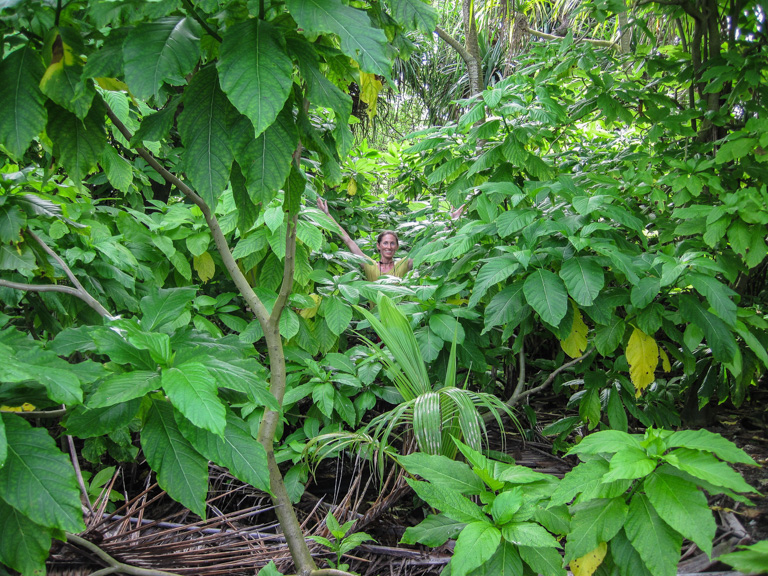- In a multi-year study, scientists found that tree seedlings were more than 5,000 percent more abundant after rats were eradicated from Palmyra Atoll, a group of 25 small islands in the Pacific Ocean.
- Invasive rats, brought by ships over the past few centuries, eat tree seedlings and vegetation, in addition to driving down seabird numbers.
- Managers eradicated the islands’ rats in 2011, and within a month, seedling densities had increased.
Plant numbers have surged in a group of islands in the Pacific Ocean following the eradication of invasive rats that gobbled up seeds and gnawed away at vegetation, a new study has found.
The findings demonstrate the resilience of natural ecosystems, Alex Wegmann, an ecologist with The Nature Conservancy of Hawaii and director of the group’s Palmyra program, said in a statement.
“In an age of well-founded concern about the environment,” Wegmann said, “Palmyra Atoll’s response to the eradication of introduced rats reminds us of the resilience of intact ecosystems and gives us hope for a better tomorrow.”

Scientists know that merely removing rats from the islands they’ve infiltrated, mostly as stowaways from visiting ships in the past few centuries, can have a remarkable impact on seabird numbers since they target their eggs and chicks. And recent research has shown that coral reefs thrive next to rat-free islands because the seabirds play a critical role in depositing nutrients in their guano that leach into the surrounding waters. Until now, however, the impact of rat eradication on the recovery of plant communities hasn’t been as clear.
Since the early 2000s, researchers have been keeping an eye on the trees living on Palmyra Atoll, a group of 25 small islands around 1,600 kilometers (1,000 miles) southwest of Hawaii in the Pacific Ocean. Then, in 2011, the California-based NGO Island Conservation teamed up with the U.S. Fish and Wildlife Service and The Nature Conservancy to rid the islands of nearly all of their rats.

When the rats were around, the scientists’ survey turned up 140 seedlings of five “locally rare” trees at about 50 plots around the atoll. Within five years of rat eradication, in 2016, they found 7,756 such seedlings — an increase of more than 5,400 percent. The density of one tree species in particular, Pisonia grandis, spiked just one month after the rats were removed.
Known as the lettuce tree or bird-catcher, among other names, this species is an important anchor of island rainforests, providing roosting sites for seabirds across the Pacific and Indian Oceans. The team found as many as 688 seedlings per 100 square meters (1,080 square feet), even though they hadn’t seen any when rats were running around the islands.
“Once rats were gone, changes became immediately apparent,” Coral Wolf, a conservation biologist with Island Conservation, said in the statement. “We were so excited to walk into a forest stand of towering Pisonia trees and find a mat of tiny seedlings carpeting the forest floor — something that hadn’t been observed at Palmyra in recent decades as far as we know.”
Wolf is the lead author of the study, published July 17 in the journal PLOS ONE.

The researchers also picked up on a 13-fold increase in the number of non-native coconut trees (Cocos nucifera) once the rats were gone, which could shake up the mix of trees in these forests. They said managers might need to devise a solution to fully restore the natural ecosystem. Still, they also showed that the intervention benefited native trees, likely making them more robust in the face of a changing environment.
“Sea level rise and changing ocean temperature and chemistry will continue to stress Palmyra’s ecosystems,” Wegmann said. “Restoring Palmyra’s native tropical rainforest allows greater whole-ecosystem resilience to climate change impacts.”
Banner image of red-footed boobies by Erik Oberg/Island Conservation.
Citation
Wolf, C. A., Young, H. S., Zilliacus, K. M., Wegmann, A. S., McKown, M., Holmes, N. D., … Croll, D. A. (2018). Invasive rat eradication strongly impacts plant recruitment on a tropical atoll. PLOS ONE, 13(7), e0200743.
FEEDBACK: Use this form to send a message to the author of this post. If you want to post a public comment, you can do that at the bottom of the page.
